Tassel Rue, False Bugbane, Carolina Bugbane - Trautvetteria caroliniensis
|
Trautvetteria caroliniensis - Tassel Rue, False Bugbane, Carolina Bugbane. Some experts consider Trautvetteria caroliniensis - Carolina Bugbane - to be monotypic, although other authorities consider there to be 4 to 6 species in the genus. While some authorities recognize three varities of Trautvetteria caroliniensis - var. caroliniensis in the eastern U.S., var. borealis in the western U.S., and var. japonica in Asia. There is disagreement even on that classification, and most authorities consider the plants in these three disjunct geographical regions to be the same species, since the differences between the varieties seemed primarily to be geographic. There also appears to perhaps be an as-yet unnamed new species in the genus which has been found in Claiborne County, Tennessee.
Trautvetteria caroliniensis is protected with a Rare classification in Pennsylvania, and is likely extirpated in Indiana.
Found in:
AL, AR, AZ, CA, CO, FL, GA, ID, IL, IN, KY, MD, MO, MS, MT, NC, NM, OR, PA, SC, TN, UT, VA, WA, WV, WY
Leave comments on Trautvetteria caroliniensis at this link. | 
Distribution of Trautvetteria caroliniensis in the United States and Canada:
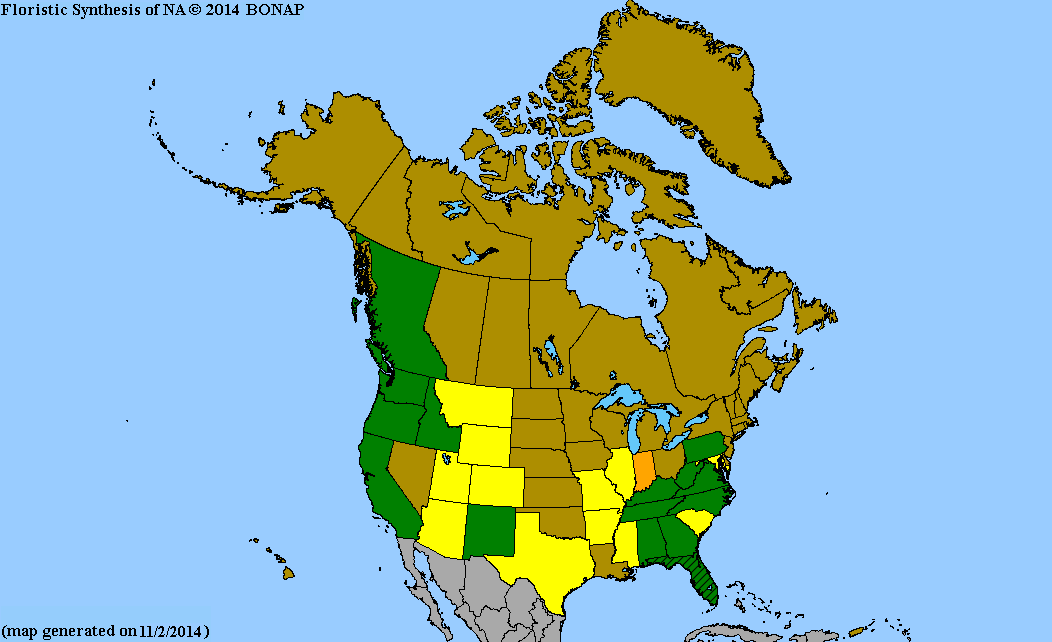
Map courtesy of The Biota of North America Program.
Map color key
Search Our Database: Enter any portion of the Scientific, Common Name, or both.
Do a general Google search of the entire site:
#ad
 Follow USWildflowers on Twitter
#ad
| | Site: Lula Lake, Walker County, GA Date: 2013-August-03 | Photographer: Gerald C. Williamson
Nikon D7000
Tamron SP 90MM f/2.8 AF Macro | | The inflorescences of Carolina Bugbane are terminal corymbs - the lower flowers have longer peduncles than the flowers growing higher in the inflorescence, so the flowers within an inflorescence are all at approximately the same height. There may be many flowers in an inflorescence. | | 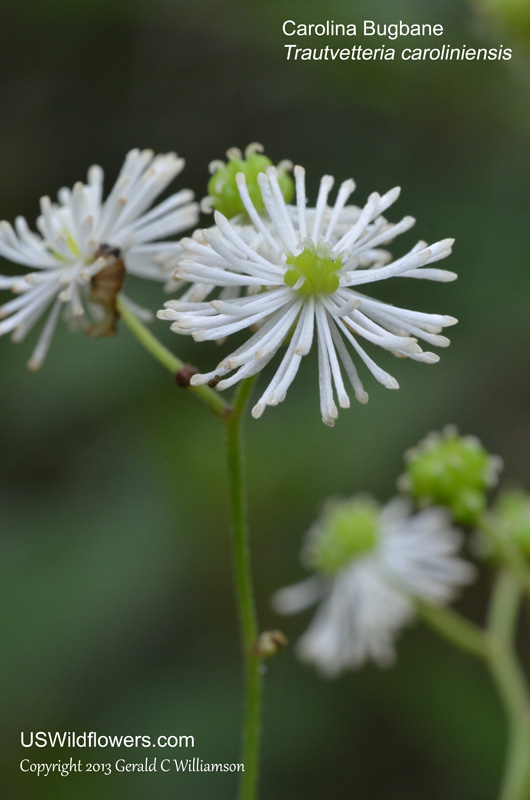
| | Site: Lula Lake, Walker County, GA Date: 2013-August-03 | Photographer: Gerald C Williamson
Nikon D7000 | | The flowers of Trautvetteria caroliniensis have no petals, but have up to 100 white stamens radially surrounding up to 15 pistils. | | Click on the photo for a larger image
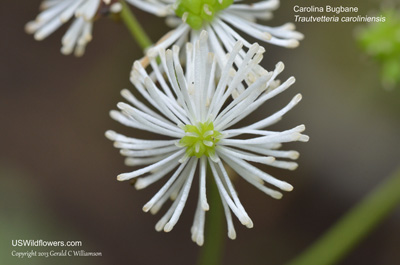
| | Site: Lula Lake, Walker County, GA Date: 2013-August-03 | Photographer: Gerald C Williamson
Nikon D7000 | | There is a single ovule per pistil, with the style becoming a beak on the seed. | | Click on the photo for a larger image
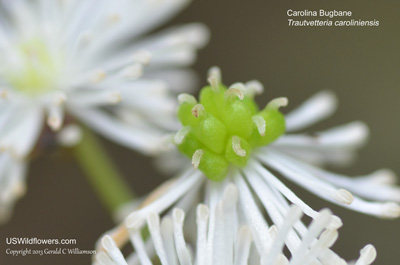
| | Site: Lula Lake, Walker County, GA Date: 2013-August-03 | Photographer: Gerald C Williamson
Nikon D7000 | | There are both cauline and basal leaves on Trautvetteria caroliniensis. The lower leaves are larger than the higher leaves. The leaves are deeply lobed, usually with 5 to 11 lobes. The lower leaves are on pedicels, while the upper leaves are reduced both in size and pedicel length until they become sessile. | | Click on the photo for a larger image
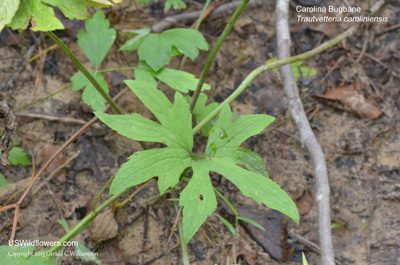
| | Site: Lula Lake, Walker County, GA Date: 2013-August-03 | Photographer: Gerald C Williamson
Nikon D7000 | | The lower leaves are on pedicels, while the upper leaves are reduced both in size and pedicel length until they become sessile. | | Click on the photo for a larger image
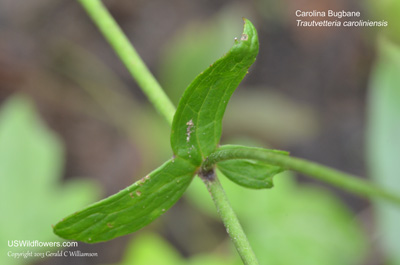
|
References used for identification and information:
|
|
| |
| #ad
|
|







